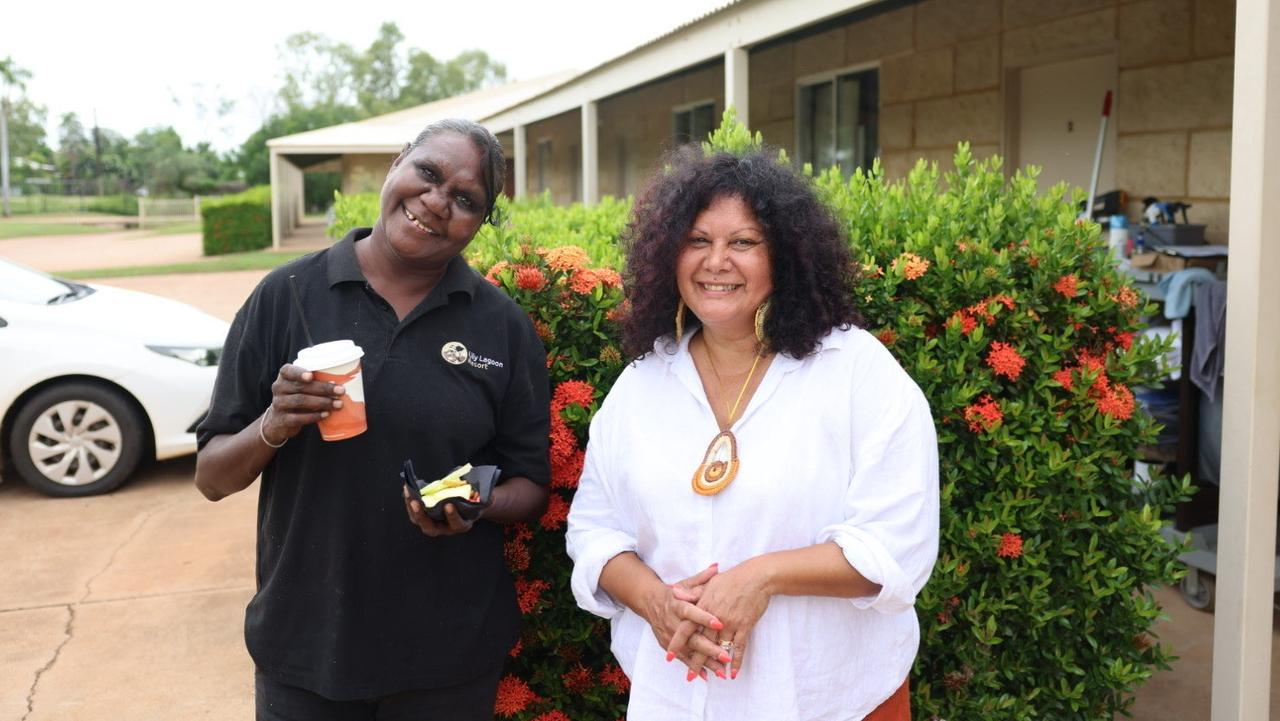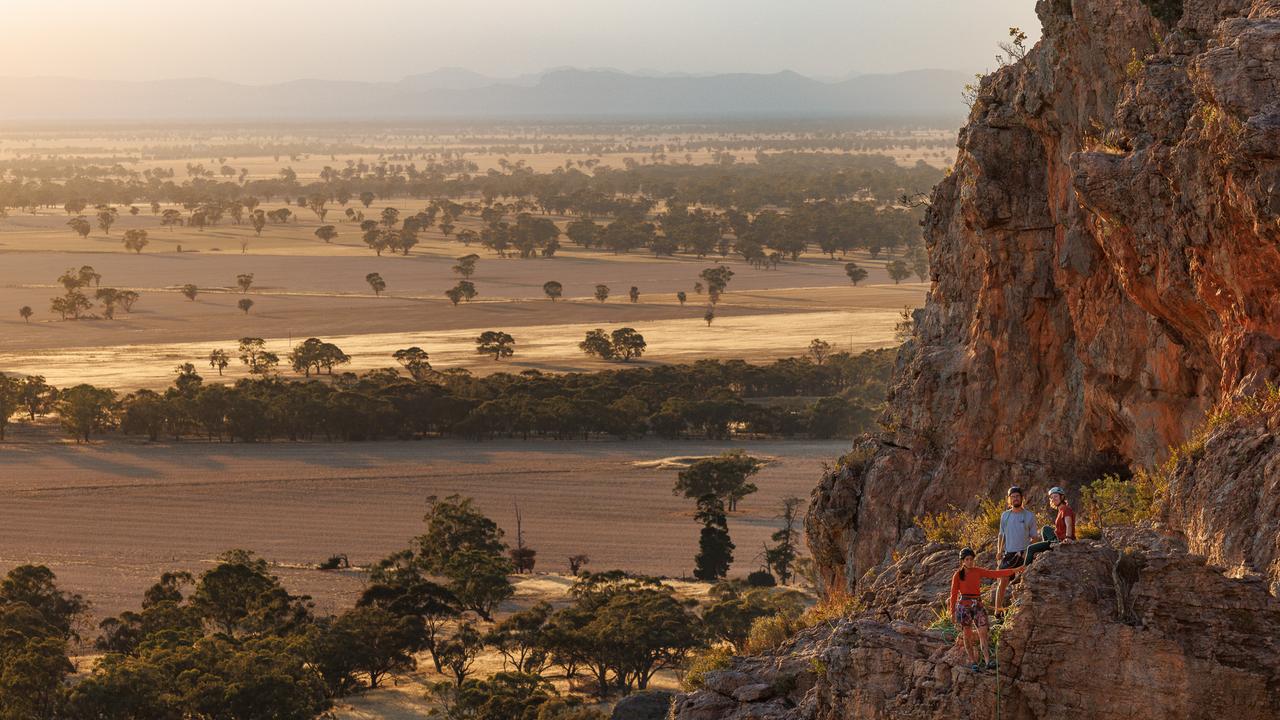Stones point way to Indigenous Silk Road
Hidden in Channel Country in outback Queensland are clues to understanding the seemingly sophisticated civilisation that operated in Australia before Europeans.
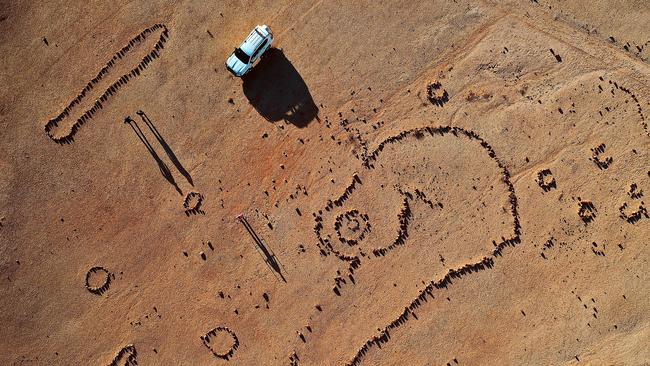
Hidden among the gibber plains and dry river beds of the Channel Country in outback Queensland are clues to understanding the seemingly sophisticated civilisation that operated in Australia before Europeans arrived.
Researchers working with the Mithaka people have, for the first time, uncovered a vast network of quarries spread over an area about the size of Belgium. They believe the quarries produced grindstones sold into transcontinental trade linking the commercial and ceremonial activities of pre-contact Aboriginal people.
Dating suggests the sites were occupied a few hundred to a few thousand years ago, making it possible to join early ethnographic accounts with archaeological evidence and modern techniques like remote sensing, genetics and isotope chemistry.
The researchers believe the Mithaka lived in seasonal villages of gunyahs (huts) usually situated near the water, where they harvested waterfowl, fish and mussels. They believe the Mithaka economy revolved around bartering grindstones for pituri (a weak narcotic), ochre, fibre and resin, often accompanied by exchanges of songs and dances. The network has been likened to a First Australian version of China’s modern Silk Road.
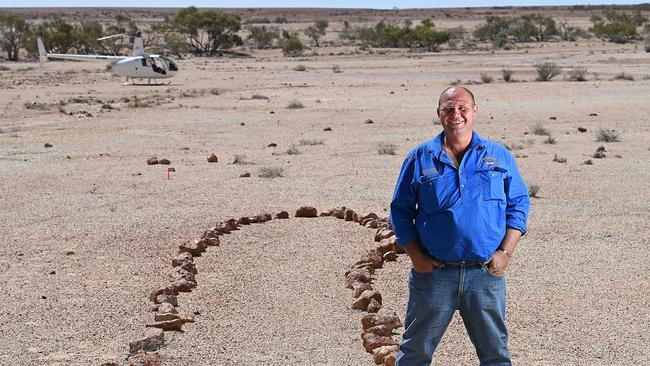
Josh Gorringe, a custodian and chief executive of the Mithaka Aboriginal Corporation, says the ongoing research is vital to helping his people rediscover their past. The Mithaka language and some aspects of cultural knowledge were lost during the early years of settlement, when many elders were preoccupied with pastoralism and droving.
“The science is helping us explain to the wider world who we are … it gives us an arsenal of knowledge to help show what our people did,” he said. “We know our stories from history. The science helps us put things in perspective … it gives us a lot more concrete evidence to show that we’ve been here for a long time.”
The Mithaka have Native Title rights over about 33,000 square kilometres of land and applications over another 22,000 square kilometres. Their archaeological sites are short-listed for National Heritage listing in recognition of their cultural value.
Michael Westaway, the University of Queensland archaeologist leading the research, was with Mr Gorringe this week examining a spectacular stone arrangement shaped like the Scorpius constellation and possibly used in initiation rituals.
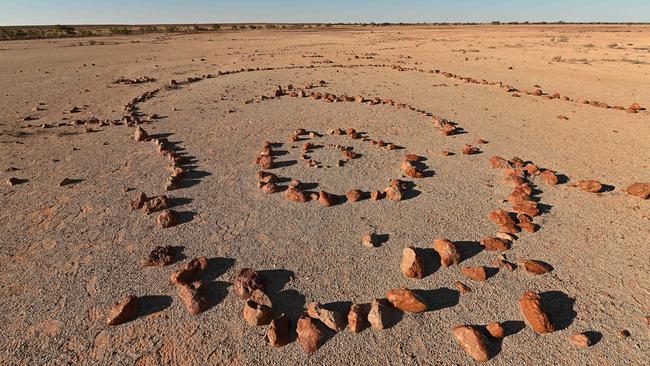
“We think this is the first physical representation of a fairly complex ceremony,” he said.
“I’ve seen a lot of stone arrangements in Australia but nothing quite like this before.”
Dr Westaway says studying Mithaka food production, ceremonial and settlement systems could “revise a lot of our understanding of the complexity of Aboriginal society”. His team’s most significant discovery to date has been the scale of Mithaka quarrying. “There’s this massive, almost industrial-scale production of grinding stones,” he said.
“The scale of these queries is unlike anything in Australia. It’s really been access to new technologies … that has exposed the scale of the landscape.
“Ethnohistory doesn’t actually talk about the scale of production … but it’s linked with the fact there were hundreds of thousands of square kilometres of native grasses they were processing – it’s like a quasi-agriculture system … there’s no evidence that they were domesticating these things, but we haven’t done the science to look into that yet.”
Mike Smith, an influential arid lands archaeologist now semi-retired but still affiliated with the National Museum, said the project was the “most significant … in the arid zone in the last 20 years”.
He believes the Mithaka maintained a complex foraging society rather than a sedentary one, inhabiting seasonal villages during boom times when rain brought the land to life. “The evidence shows what foragers can do if they are not disrupted by outsiders,” he said. “They are very adept at stabilising the returns from a very harsh environment.”
Dr Westaway would like to see a cultural centre established to help tell the Mithaka story. “It’s an incredibly powerful national narrative that most Australians have absolutely no idea about,” he said.
Mr Gorringe’s priorities are closer to home. He wants Mithaka knowledge compiled for future generations so the process of restoring it to its former glory can continue. “My kids and their kids will get a hell of a lot out of the research we’re doing,” he said.
In a paper published in Antiquity in June, the researchers argued Mithaka country could be used to develop a system for investigating Aboriginal villages.
It was “an exciting and significant opportunity to obtain new insights into Aboriginal subsistence, trade and settlement,” they wrote.

